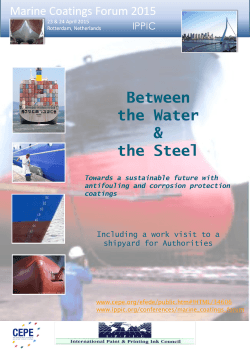
CENTRO E EXTRANJEROS
OVERVIEW The certificate program consists of four modules taught in Spanish (on campus and via videoconference). Each module consists of 30 hours class equivalent to two credits. 15 two-hour sessions are taught in the evening shift. For a better teacher-student interaction, the subjects covered in class will be discussed and supplemented with compulsory reading texts. The student will get the compulsory didactic material provided in compact disc format after enrollment. In order to pass each module, students must have an average attendance of 80% and complete all class assignments. Modules can be taken independently, and the corresponding certificate will be granted. The diploma will be granted after the completion of the four modules. ADMISSION REQUIREMENTS To have completed professional studies. Foreign students must have knowledge of Spanish language equivalent to level intermediate 3 at the CEPE. Students must have an interview with the diploma coordinator prior to the registration. COORDINATOR Guadalupe C. Gómez-Aguado de Alba, M.D. E-mail: gucega@servidor.unam.mx Phone: 56-22-24-80 CALENDAR 2009 y 2010 Module I August 10th to September 28th, 2009 Registration: Jule 27th - August 10th CENTRO de ENSEÑANZA para EXTRANJEROS Module II October 8th to December 3rd, 2009 Registration: September 28th - October 8th C E P E Module III January 18th to March 8th, 2010 Registration: January 4th - 18th Module IV March 29th to May 20th, 2010 Registration: March 9th - 29th SCHEDULE Mondays and Thursdays: 18:00 - 20:00 hrs. COST PER MODULE $ 2,000.00 pesos or its equivalent in US dlls. LOCATIONS CEPE-CU (attended classes) CEM-Polanco (videoconference) CECAD Oaxaca (videoconference) ESECH en Chicago (videoconference) INFORMATION AND REGISTRATION Centro de Enseñanza para Extranjeros, UNAM Av. Universidad 3002, Ciudad Universitaria, Delegación Coyoacán, 04510 México D.F. Phone: (52)(55) 56 22 24 70, 66 and 80, Fax: (52)(55) 56 16 26 72 E-mail:cepe@servidor.unam.mx http://www.cepe.unam.mx CEPE-Polanco LLic. Ana Lidia Escobar Villagrán Phone: (52) (55) 5254-0313 and 5203-3926 E-mail: analidia@cepe.unam.mx http://www.cempolanco.unam.mx CECAD Oaxaca M.C. Delia A. Monzoy Vásquez Directora del CECAD UABJO-UNAM Phone: 01 (951) 50 20 740 damonzoy@hotmail.com ESECH en Chicago Mtro. Oscar Alatriste Guzmán Phone. (312) 5731347 E-mail: oscaralg@servidor.unam.mx www.cepechicago.unam.mx/ Diseño Gráfico: Lic. Erandi Hernández Serra Actualizado: 01/09 Certificate A VOYAGE THROUGH MEXICAN HISTORY www.cepe.unam.mx MODULE I MODULE III PREHISPANIC HISTORY OF MEXICO MEXICO AND FOREIGN INTERESTS IN THE 19th CENTURY Dra. Patricia Gallardo Arias PRESENTATION This certificate offers an updated analysis of the historical happenings of Mexico from its origins to the present through diverse perspectives which cover political, social and economic issues. The thematic content of this course responds to the demand for knowledge and coherent explanations of the different periods of Mexican history, which allows us to understand the structural, critical and objective manners of the most relevant past events and their relationship with the present. Themes: 1. Mesoamerica. Chronology and cultural areas 2. Formative Period or Pre-Classical 3. Classical Period and Teotihuacan 4. Mayans during the Classical Period 5. Northern Mexico 7. Post-Classical Period. OBJETIVE MODULE II BIRTH OF THE MEXICAN COLONIAL SOCIETY Mtra. Berta Gilabert Hidalgo Upon completion, the student will have acquired knowledge and theoretical and conceptual tools to be able to conduct a critical analysis regarding the contexts of Mexican history and in particular, regarding its actual reality. Themes: 1. Free trade in New Spain. England and USA at the end of the colonial regime. 2. The first Free Trade Agreement and “Informal English Imperialism” (1st half of the 19th century). 3. Spain, France and “North American expansionism” (1st half of the 19th century). 4. The English commercial empire and the French territorial aspirations (1861-1867). 5. Commerce and foreign investments (1867-1880). 6. Imperialism, upper phase of capitalism in Mexico (1780-1911). MODULE IV FROM REVOLUTION TO GLOBALIZATION. MEXICO IN THE 20th CENTURY Dr. Enrique García Moisés Vista de la Plaza de México, José Joaquín Fabregat. Colección: Patrimonio Universitario PROFILE Litografía. Retirada del mariscal S.E. Bazaine de México, 1867. Colección: Fondo Reservado de la Biblioteca Nacional de México Pirámide del Sol. Teotihuacan. Colección: CEPE 6. Epiclassical and Terminal Classical Periods The main objective is to supply the student with hypothetical consideration and factual information regarding different aspects of the political, economic and social reality of Mexican history, in order to acquire conceptual tools of analysis for understanding and interpreting it. Mtra. Guadalupe C. Gómez-Aguado de Alba Mtro. Gustavo Peña Hernández Themes: 1. Discoveries n Mexico 2. The early colonial times. The establishment of the colonial regime 3. Political structure of New Spain 4. Evangelization or spiritual conquest 5. Economy in New Spain during the 16th and 17th centuries 6. Society in New Spain during the 16th and 17th centuries Mural. La trinchera. José Clemente Orozco, 1924. Colección: Patrimonio Universitario Themes: 1. From the “Porfirista” regime to the Revolution: Causes, process and development (1911-1924). 2. The Period of National Reconstruction (1924-1934). 3. The Nationalist Period (1934-1940). 4. Phase of “exterior development” and “stabilization” (1940-1970). 5. The economic crisis in the country (1970-1988). 6. "Neoliberalism" and "globalization".
© Copyright 2025



















